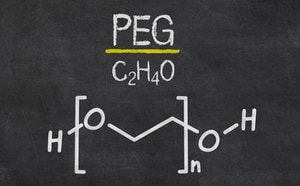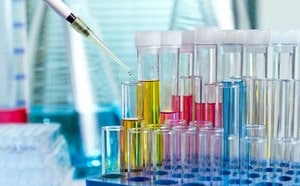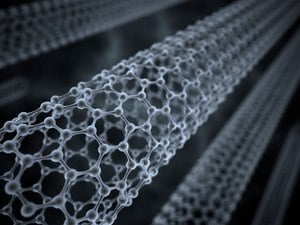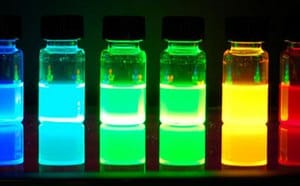Nanoparticle & Microparticle Synthesis
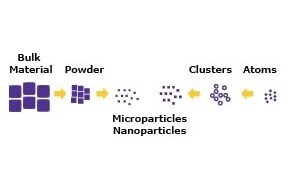
Microparticles and nanoparticles are a unique class of materials with enormous technological potential in energy, imaging, medical, and environmental applications. Nanoparticles are defined to have at least one physical dimension less than 100 nanometers. Microparticles have a physical dimension between approximately 1 and 1000 micrometers. Despite having the same composition as the corresponding bulk material, due to size effects, these particles display exceptional optical, electrical, thermal, and magnetic characteristics. Researchers have developed methods of synthesis to further control the properties, shape, composition, and size distribution to better suit specific applications.
Featured Categories
Discover our selection of polyethylene glycol (PEGs) and PEG derivatives in a wide range of molecular weights for all your PEGylation needs and applications.
We offer an extensive range of natural and synthetic biomedical polymers with advanced properties suitable for all your biomedical applications.
Discover diverse carbon nanomaterials: fullerene, nanotubes, graphene, quantum dots, nanodiamonds. Fuel energy, electronics, therapeutics research.
Light up your research with our comprehensive portfolio of core-type, core-shell, and alloyed quantum dots in various compositions, sizes, functionalizations, and kits.
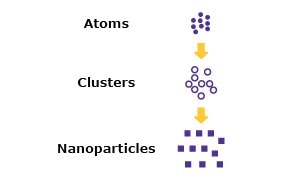
Microparticle and nanoparticle synthesis is typically achieved by physical and chemical methods. In physical methods, particles are created by reducing the size of the source material, a so-called top-down approach to microfabrication and nanofabrication. Physical techniques include milling, gas condensation, electro-spraying, lithography, and thermal decomposition. In many chemical methods, particles are created by nucleating and growing particles from atomic or molecular precursors normally in the liquid or vapor phase of a chemical reaction, a so-called bottom-up approach. Chemical methods for synthesis of microparticles and nanoparticles include microemulsion, hydrothermal, microfluidic, chemical vapor, pyrolysis, and sol-gel processes. Chemical synthesis of nanoparticles produces nanostructures with less defects, provides access to more complex and homogeneous chemical compositions, and is easily scalable for low-cost and rapid fabrication.
Since these techniques are often labor-intensive and result in toxic byproducts, biological methods or green nanoparticle synthesis methods have emerged, such as biogenesis with microorganisms and plant extracts. These sustainable methods produce non-toxic, eco-friendly particles suitable for biomedical and environmental applications.
Visit our document search for data sheets, certificates and technical documentation.
Related Articles
- Gold (Au) nanoparticles have tunable optical and electronic properties and are used in a number of applications including photovoltaics, sensors, drug delivery & catalysis.
- Colloidal quantum dots (CQDs) are semiconducting crystals of only a few nanometers (ca. 2–12 nm) coated with ligand/surfactant molecules to help prevent agglomeration.
- Mesoporous silica used in wastewater remediation, air cleaning, catalysis, bio-catalysis, and drug delivery.
- Solvothermal synthesis of nanoparticles: applications from nanocircuits and nano-optical circuits to nanomagnetics and biotech.
- Professor Torelli reviews fluorescent nanomaterials, assessing brightness, photostability, and size for emerging bioimaging applications.
- See All (38)
Related Protocols
- Polymeric spheres serve as crystal templates. Synthesis methods yield large quantities.
- Selenium's roles range from essential dietary element to semiconductor in advanced applications like xerography.
- Microparticles protocol for washing particles may be done via centrifugation. This procedure must be performed carefully.
- Nanodisc technology aids membrane protein solubilization, overcoming associated challenges in diverse protein classes.
- See All (4)
How Can We Help
In case of any questions, please submit a customer support request
or talk to our customer service team:
Email custserv@sial.com
or call +1 (800) 244-1173
Additional Support
- Chromatogram Search
Use the Chromatogram Search to identify unknown compounds in your sample.
- Calculators & Apps
Web Toolbox - science research tools and resources for analytical chemistry, life science, chemical synthesis and materials science.
- Customer Support Request
Customer support including help with orders, products, accounts, and website technical issues.
- FAQ
Explore our Frequently Asked Questions for answers to commonly asked questions about our products and services.
To continue reading please sign in or create an account.
Don't Have An Account?